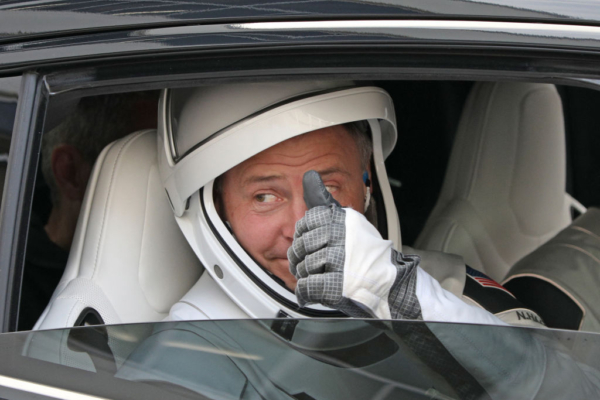On Saturday, September 28, SpaceX launched a rescue mission by deploying a streamlined team to bring back two astronauts stranded at the International Space Station to Earth. However, this rescue mission is not expected to be completed until next year.
The mission by SpaceX, named “Crew-9,” was launched from the Kennedy Space Center in Cape Canaveral, Florida, at 1:17 p.m. Eastern Time on Saturday.
NASA astronauts Barry Wilmore and Sunita Williams had traveled to the International Space Station in early June aboard Boeing’s Starliner for a planned week-long test flight. However, due to safety concerns, the Boeing spacecraft returned to Earth earlier this month, leaving the two astronauts stranded at the space station. They have been humorously referred to as “space wanderers,” and their stay on the ISS will be over 100 days longer than expected.
As NASA typically rotates space station crew every six months, the newly launched SpaceX spacecraft reserved two seats for Wilmore and Williams until late February next year. NASA officials said it was not feasible to expedite their return to Earth without disrupting other scheduled missions.
Therefore, the launch mission on Saturday, unlike other routine flights under NASA’s commercial crew program to and from the space station, carried only two crew members instead of the usual four. Those on board the SpaceX spacecraft launched on Saturday were NASA astronaut Nick Hague and Russian space agency astronaut Aleksandr Gorbunov.
As the rocket propelled the spacecraft into space, Hague and Gorbunov were strapped inside SpaceX’s Crew Dragon capsule, nicknamed “Liberty,” atop the Falcon 9 rocket. Powered by nine large engines at its base, the rocket roared into action, pushing the 1.2 million-pound (544,300-kilogram) rocket system skyward.
About 2.5 minutes later, the Falcon 9 rocket’s first stage ceased firing and separated from the second stage. The second stage then ignited its engine to continue propelling the Crew Dragon spacecraft forward at over 17,000 miles per hour (27,360 kilometers per hour), equivalent to 22 times the speed of sound.
The first stage of the rocket will autonomously guide itself back to a landing platform in Florida for refurbishment and reuse by SpaceX.
Once the Crew Dragon spacecraft reaches orbital speed, it will separate from the Falcon 9 rocket’s second stage, begin maneuvering in orbit using onboard thrusters to adjust its position, and is expected to dock with the International Space Station around 5:30 p.m. Eastern Time on Sunday.
Upon Hague and Gorbunov’s arrival at the space station this weekend, the four astronauts who have been living there since March will be able to depart using SpaceX’s crew capsule and return to Earth. Their return was delayed by a month due to the mishap during the Boeing Starliner launch.
Hague admitted that launching with only half the crew and returning with two astronauts trained on another spacecraft posed a significant challenge.
“We are facing a great challenge,” Hague said upon arriving at the launch site from Houston over the weekend. “We understand each other, we are professionals, and we will step up to complete what is required of us.”
Hague further stated before the flight that change is the only constant in manned space operations.
“There’s always something changing. Maybe this time it’s just a bit more obvious to the public,” he said.
Hague was appointed as the commander of this rescue mission based on his experience and handling capabilities during an emergency situation in a launch six years ago when a Russian rocket malfunctioned, propelling the spacecraft he was in with another astronaut to a safe zone.
Due to NASA’s collaboration with SpaceX in bringing back the stranded astronauts, newly appointed NASA astronaut Zena Cardman and veteran astronaut Stephanie Wilson were removed from this flight mission. NASA stated that both astronauts remain eligible for future missions.
Gorbunov remains bound by exchange agreements between NASA and the Russian space agency.

